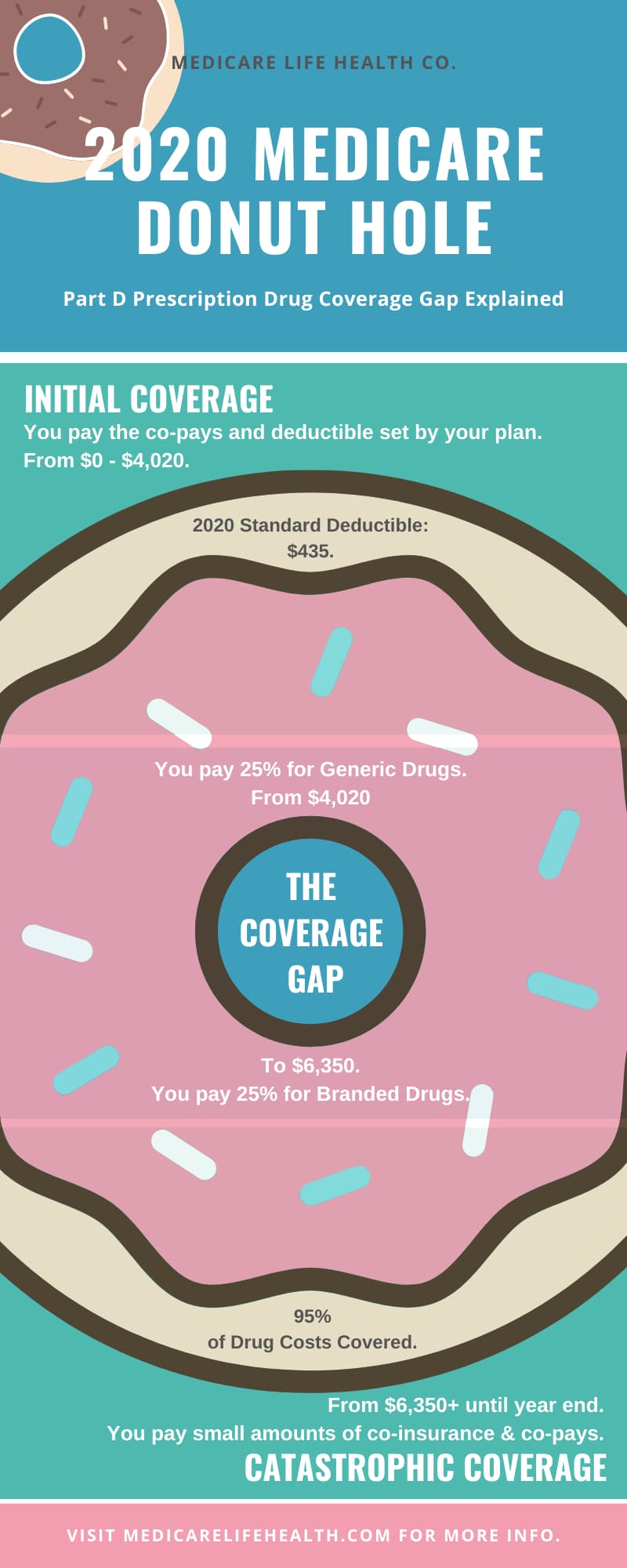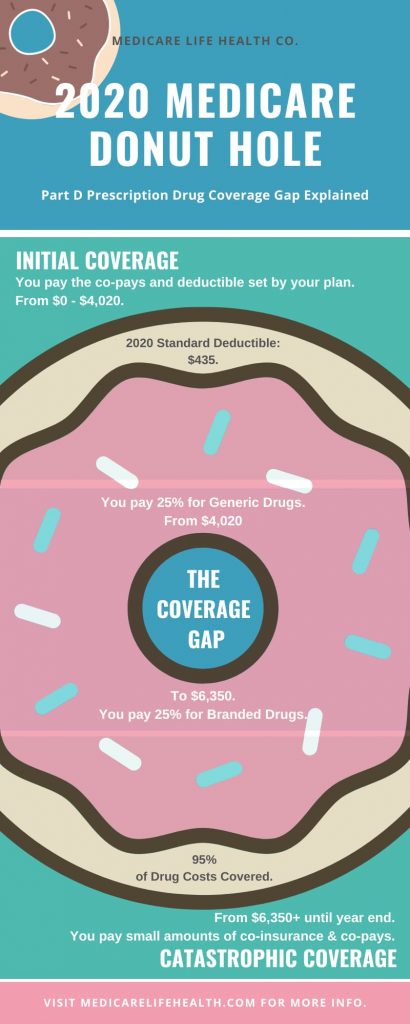What is the Medicare Donut Hole?

The Medicare Donut Hole (or Doughnut Hole) is a coverage gap in the Part D Prescription Drug Plan where beneficiaries could pay more for their drugs.
The Center for Medicare and Medicaid Services (CMS) calls the coverage gap a “temporary limit” on what their drug plan will cover.
Why Did My Drugs Get More Expensive this Month?
During Medicare’s Annual Enrollment Period (AEP) this year I was stationed at a pharmacy a few hours a week to answer people’s questions.
One gentleman came up to me and said, “The Pharmacist sent me over to you to ask you: Why did my drugs cost more this month? I get the same drugs each month, but this month, they cost me more!”
Yes sir, you have reached the Medicare Donut Hole in your Part D Prescription Drug Coverage. It was November, and this gentleman had been able to make it his other five years on Medicare without reaching the coverage gap.
However, this year, his drug costs were a little higher, and he hit the gap before the end of the year.
Will I hit the Coverage Gap?
The price changes in the coverage gap can be a shock if you have not experienced it before. So, let’s go over a little more information to prepare you for what might come.
When Does the Donut Hole Begin?
In 2020, the Part D Coverage Gap begins when you and your plan have spent $4,020 on prescription drugs. (In 2019, it was $3,820.) Thus, if you only spend $1,000 a year on drugs, the donut hole will not affect you.
Who Does the Coverage Gap Not Apply to?
- People who pay less than $4,020 in drugs each year.
- In addition, people who get extra help in paying for their drug plans (for example, low income subsidies and Medicaid beneficiaies) will not enter into the coverage gap.
When Does the Donut Hole End?
In addition, you may be wondering, when does medicare donut hole end? It ends once you and your drug plan have spent $6,350 in 2020 ($5,100 in 2019). You are then out of the coverage gap and have entered into Catastrophic Coverage.
During Catastrophic Coverage you will pay a much smaller amount of money for your drugs. This includes smaller co-insurances and smaller co-payments for the rest of the calendar year.
What am I Paying in the Coverage Gap (Medicare Doughnut Hole)?
As of 2020, Medicare will pay for 75% of BOTH brand name and generic drugs in the coverage gap. As a result, you will pay 25% of the cost of your drugs in the coverage gap.
However, there is a generic to brand name drug difference in what counts towards your out-of-pocket costs to get your out of the donut hole:
- For generics, only your copayment counts towards getting you out of the coverage gap.
- Conversely, with brand name drugs, 95% of the total price of the drug (your co-payment and what your plan pays) counts towards your out-of-pocket costs to help you reach the end of the gap.
There are some Medicare drug plans that includes coverage in the gap. According to CMS, ” you may get a discount after your plan’s coverage has been applied to the drug’s price. The discount for brand-name drugs will apply to the remaining amount that you owe.” You will need to speak to your plan to learn more.
What Costs Counts Towards the Coverage Gap?
Here are the costs that apply to your out-of-pocket expenses:
- First, Your Annual Drug Plan Deductible
- Second, Your Co-insurance and Co-Payments
- Third, Your Discount on Brand-name Drugs in the Donut Hole Coverage Gap
- Finally, Your Costs in the Coverage Gap
Here is what does not apply:
- Your Plan Premiums
- Any Pharmacy Dispensing Fees
- Any Drugs Not-Covered by Medicare Part D
Need More Information on Part D Drug Coverage?
- Start with our Simple Introduction to Part D Coverage here.
- Need to Switch your Drug Plan? You can do this during Annual Enrollment Period (AEP) each year.
- Or, just start at the beginning, with “What is Medicare?” to get an overview of the Medicare Program.
For Part D Sign-up Assistance
- Finally, if you are just aging into Medicare and need a Drug Plan.
- Contact us here if you live in Nebraska or Iowa.
- Or, find an agent here for other states.




2 thoughts on “What is the Medicare Donut Hole?”